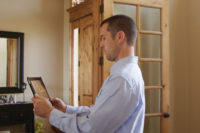Contents losses can be time-consuming and complex, often with an inventory of hundreds—sometimes thousands—of personal property items that each require a replacement cost. And research shows that contents claims are growing in size and complexity. Many contents restoration professionals are responding to these contents claim challenges by using advances in mobile technology to eliminate repetitive steps and work faster and more precisely.
Data from Xactware shows the trend toward larger and more expensive contents losses. For instance, since 2010, the average cost of a contents claim reported to Xactware has increased 37.6%. The average total quantity of items in a contents claim jumped from 86 items in 2010 to 130 in 2014. Contents restoration professionals are not only dealing with increasingly larger losses, they are also facing growing pressure from both insurance carriers and policyholders to quickly and accurately document the claim. Traditional contents estimating methods—such as jotting notes on a pad of paper at the site and then reentering that data into a claims estimating system—often require redundant entry and multiple site visits. This makes it expensive for the contents restoration professional to document the claim, and the longer cycle time can lead to lower customer satisfaction.
With help from advanced mobile technology, contents professionals can use the tablet devices they carry with them 24/7 to expedite contents loss documentation and billing. A few finger taps on a mobile device can replace rows of handwriting. This data can then be sent directly to the estimating system, instead of reentering all that information by hand. The key to getting the most from this technology is how estimators use it. Here are a few ways to effectively leverage mobile technology for contents restoration.
Skilled contents estimators capture as much detail as possible while on site to avoid headaches and aggravation later. But the time it takes to write descriptions for a large number of items often pushes estimators to write notes that are as short as possible. Simply writing “lamp” doesn’t give sufficient information to describe the item, let alone to properly estimate the cost to restore or replace it. A better, more descriptive line item entry, such as “Porcelain Jar Table Lamp with Antique Finish,” makes it much easier to provide a precise estimate. With predictive search technology in a mobile scoping app, it takes fewer finger taps to find and enter the full description than it does to type the word “lamp.” This mobile app technology makes it far faster to scope on site while at the same time providing high-level detail that leads to precise costs calculations.
Photos are often used to help document the condition of contents items. Organizing and sorting through a large number of photos later can be time-consuming and confusing. Using an advanced app and the mobile device’s built-in camera and audio recorder automatically links photos and voice notes with the line item. This not only saves significant time, it also allows the estimator to take many more photos than would otherwise be practical. This added photo documentation can be invaluable when resolving concerns or answering questions.
Next, it’s important to evaluate how much training is needed before using mobile technology. This is a particularly critical issue in the aftermath of a significant catastrophe when contents restoration professionals are dealing with an influx of large losses and must bring on new personnel to help handle the backlog. Skilled estimators can’t afford to take time to train new recruits on technology platforms that are difficult to learn. Advanced mobile technology must allow new users to go to work right away with an intuitive, flexible interface that is easy to learn and quick to navigate. Online training options and 24-hour support should also be readily available if the need arises.
Accurately determining the cost of contents items is critically important to contents estimators. With advanced contents estimating technology and a huge database of vendor-specific items, estimators can not only see current replacement costs for items, but also where they can be purchased. When an item is obsolete, estimators are shown suggested like-kind-and-quality replacements that have matching features. This saves estimators a huge amount of time determining costs and provides unprecedented precision and detail.
These are just a few ways contents restoration professionals can leverage mobile technology to work more efficiently. By making effective use of mobile technology, contents restoration professionals will be prepared to handle all types of contents claims efficiently and accurately. They will also improve competitiveness and customer satisfaction.





Report Abusive Comment